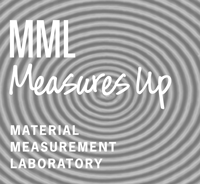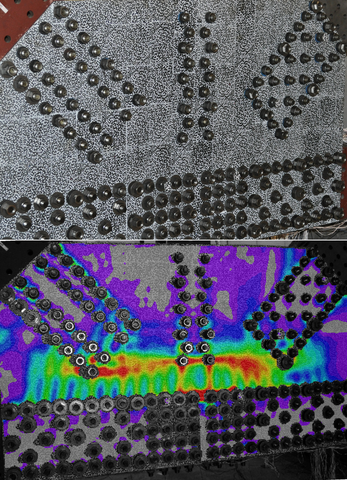
NIST contributed to improved safety standards by helping to illustrate the malfunction of a key bridge part.
The sudden failure of a hexagonal steel plate unleashed catastrophe on a busy Minnesota highway bridge on August 1, 2007. The failed gusset plate, which connected structural members of the deck truss bridge, plunged a 456-foot-long span on Interstate 35W into the Mississippi River. Of the 111 vehicles on the deck, 17 were recovered from the river. In all, 13 people died, and 145 were injured.

While the National Traffic Safety Board (NTSB) determined that that the collapse was due to an undetected design error that resulted in gusset plates that were not thick enough to shoulder the bridge’s load—and not lapses in maintenance or inspection—it also pointed to a need for clarified design and load rating specifications for gusset plates. The NSTB also underscored "inadequate uses of technologies for accurately assessing gusset plates."
NIST’s Material Measurement Lab responded by volunteering use of a versatile evaluation technique—digital image correlation (DIC)—in the post-disaster study led by the Federal Highway Administration. Of all the test methods used in the full-scale experiments, only DIC could track the entire process of deformation, from the initiation of strain at nearly imperceptible levels to ultimate failure across entire gusset plates. The optical method trained a pair of carefully calibrated, high-resolution digital cameras on a semi-random pattern superimposed on a gusset plate under test. The cameras repeatedly imaged the plate, sent the pictures to a computer that correlated each image pair to the previous pair, and calculated where the pattern had moved, in what direction and by how much. The correlation followed the plates in three dimensions, yielding contour maps showing the interplay of forces as the plates deformed.
NIST’s DIC measurements were especially useful in unmasking the mechanisms at work at the point of structural failure, a valuable complement to data gathered with more traditional test methods. The test results, combined with computer modeling, were the basis for new national safety standards for bridge gusset plates.
In ongoing research, NIST is using DIC to better understand stresses and strains during sheet metal forming of car parts made with lightweight alloys. NIST also helped to launch the International DIC Society, a new organization devoted to training and educating users, and to developing standards for the rapidly growing number of real-world and research applications of this non-contact measurement technology.
9.1% of U.S. bridges were rated structurally deficient in 2016 by the American Society of Civil Engineers
55,710 bridges nationwide need to be repaired or replaced, according to the American Association of State Highway and Transportation Officials

